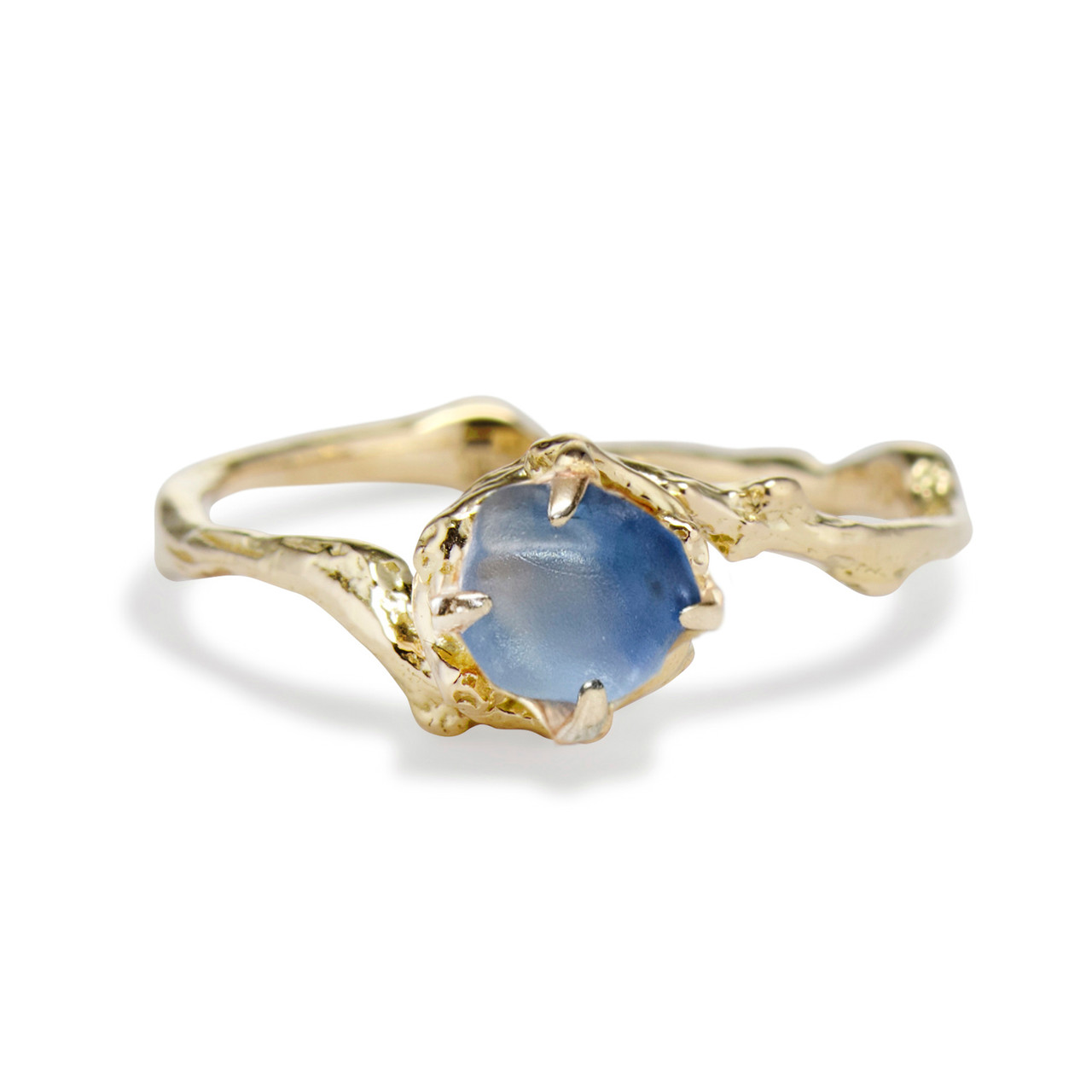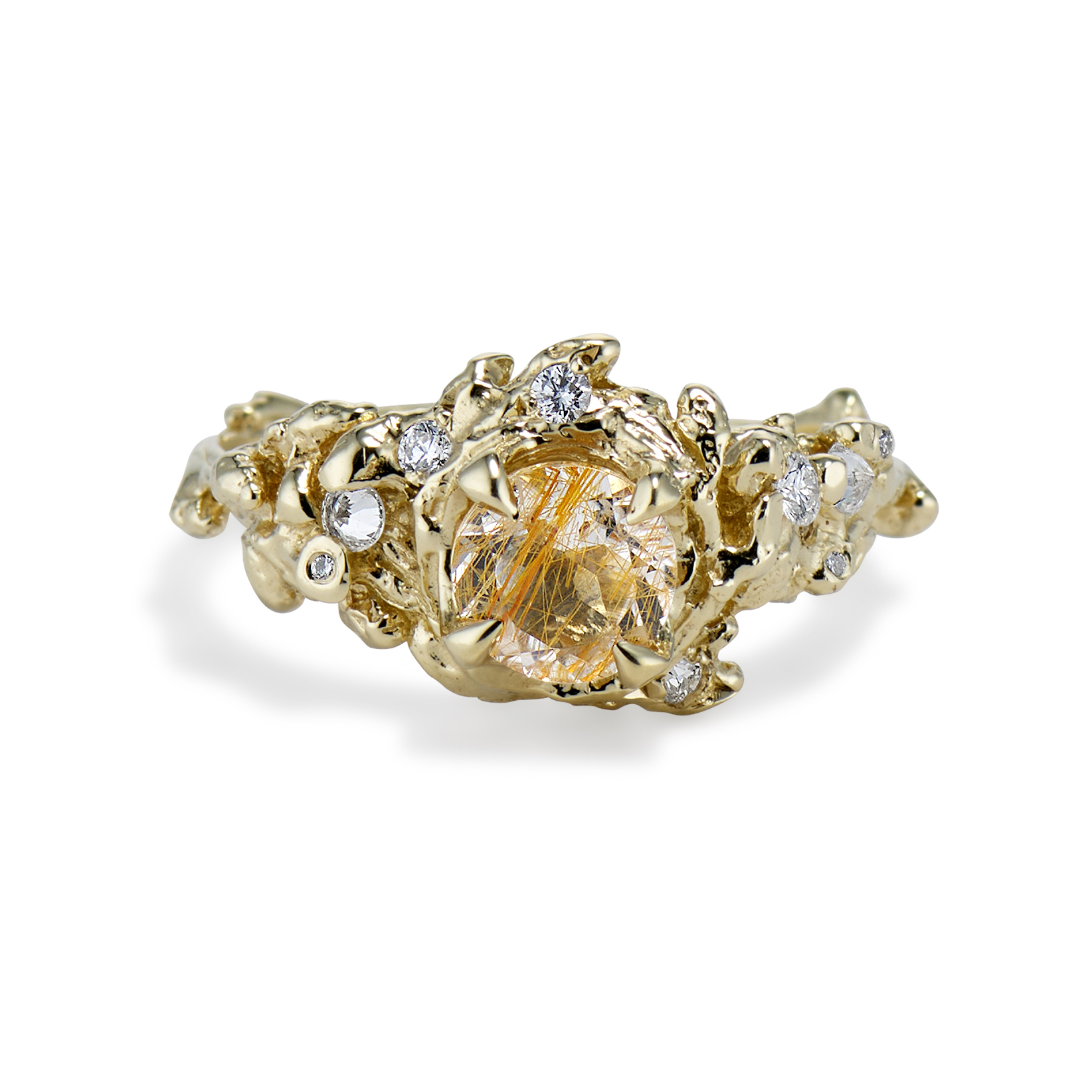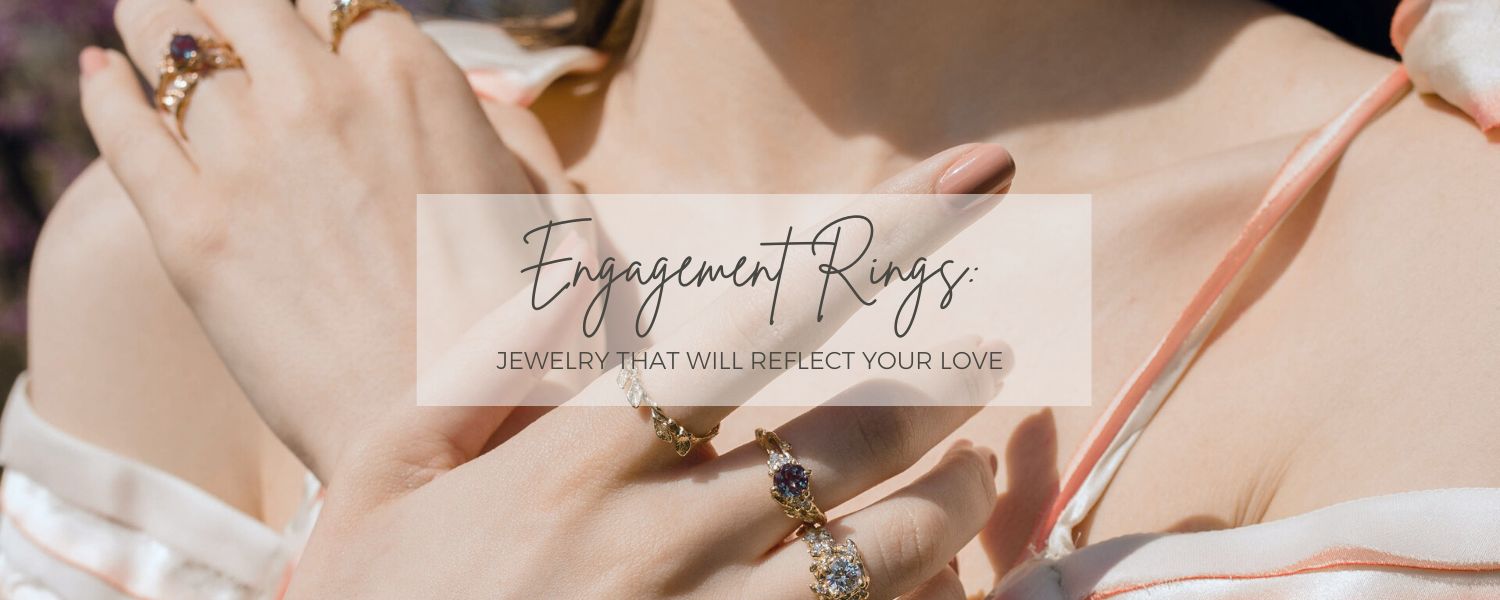Posted by Olivia Ewing on 31st Jul 2023
View Post
BIG PICTURE THINKING: WHAT TO CONSIDER
Welcome back to part two of our two-part series: What to Consider When Choosing an Engagement Ring! Last week, we discussed the blingy center stone and why you should think about how your partner uses their hands before choosing the type of stone, the various shapes of stones, and the 4Cs - a the grading categories that determine the overall quality and price of the diamond or gemstone.
After you’ve decided on and picked out your center stone, it’s time to consider the larger picture of the engagement ring. Namely, what style of ring do you want, what metal, and how do you want to secure your stones?
SELECT YOUR STYLE
There are several ring styles available, each with its own unique design and appeal, however, you may find yourself coming across these next few styles the most often.
THE SOLITAIRE

The solitaire ring style is a timeless and elegant choice that prominently features a single center stone. Typically, this center stone is a diamond, although other gemstones are also used.
The solitaire ring design is known for its simplicity and minimalism, putting the focus on the beauty and brilliance of the center stone. The stone is securely held in place by prongs, allowing it to catch and reflect light from all angles, maximizing its sparkle and fire. It is ideal for those who appreciate understated elegance and a clean, uncluttered look.
Often considered a classic choice for engagement rings, its timeless appeal ensures that it will never go out of style and will continue to be a popular choice for many generations to come.
VINTAGE

If your partner often feels like they were born in the wrong decade, then a vintage style engagement ring may be perfect for them. Drawing inspiration from decades past, vintage style rings often utilize delicate details like filigree designs, milgrain detailing and unique diamond shapes such as cushion or asscher cuts. Many vintage style rings also feature colored gemstones like sapphires, rubies, or emeralds, adding a pop of color to the design.
These rings can evoke feelings of nostalgia, romance, elegance, and individuality, providing a unique and meaningful symbol of love. Vintage-style engagement rings offer a timeless and classic design that is highly sought after and treasured by many.
HALO

Halo style engagement rings are a popular choice for those seeking a glamorous and eye-catching ring design. The halo design features a center stone encircled by a halo of smaller diamonds or gemstones, accentuating the center stone and giving it a larger and more radiant appearance. As a bonus, often the halo style creates the illusion of a larger diamond. So if your partner likes things big and flashy, you really can’t go wrong with a halo engagement ring.
Halo rings can be set with different diamond cuts, such as round, cushion, or pear. The halo can be a single or double row of diamonds or gemstones, and can also be combined with other ring styles like pave or three-stone for a unique and personalized look. The halo style engagement ring's sparkling and glamorous design has made it a timeless and sought-after choice for many.
THREE STONE

The three stone engagement ring style, also known as a trilogy or past-present-future ring, is cherished for its symbolic meaning and stunning design. This style features a center stone flanked by two smaller stones on either side. Each stone represents a different element, such as the past, present, and future, or the friendship, love, and fidelity of a couple. Beyond its symbolic significance, the three stone ring offers a balanced and elegant look, making it a timeless and meaningful choice for engagements and anniversaries.
Take the three stone look a step further and consider adding even more gemstones. Our Four Stone and Five Stone engagement rings bring the bling!
MEET YOUR METALS
Now that you’ve got what is often considered the most nerve wracking decision out of the way, let’s focus on the fun details of the ring, starting with the type of metal.
GOLD

If it seems that gold has been the primary metal of choice for engagement rings forever, that’s because it has. As we explained in Part One, the Romans adapted the engagement ring/ wedding band tradition from the Egyptians with gold rings to signify ownership.
There are two important things to know when considering going for gold. The first is how gold is measured, and the second is what the different types of gold are and what that means. Below we further break down the latter, but first, lets go over the karat system and what it means.
KARAT VS CARAT
It’s easy to confuse a rings karat with its carat…after all, there really is only one letter distinguishing the one from the other. As we described in Part One, the carat (or carat weight) is a measurement of a gemstones (usually diamonds) weight. This informs the overall price as the heavier the diamond the more expensive the ring.
Karat, on the other hand, is a measurement of the gold purity in the band and is often shortened to K, as in 24K, 14K, or 18K. Because gold is a softer metal, the higher the karat, the more susceptible the ring is to breaking, scratches, or being dented. Conversely, the lower the percentage of pure gold, the more durable the ring.
Like gemstones that have a lower Moh’s score, it’s not advised to select a 24K gold setting. The ring is just more likely to break. But don’t let that stop you if you have your heart set on 24K magic, as Bruno Mars sings. Just be sure to treat the ring a little more delicately.
One more thing, because pure gold is…well…pure, you can only find it in one color - yellow. So without further ado, let’s talk about why that is exactly.
YELLOW GOLD

Bright, warm, and glimmering, yellow gold is a classic for a reason. Pure gold is yellow in color but a yellow gold engagement ring is not 100% pure gold. As we’ve mentioned before, pure gold is incredibly soft. To ensure that engagement rings and other fine jewelry are durable enough to be worn everyday yellow gold is a mixture of pure gold and alloys.
ROSE GOLD

Rose gold has become increasingly popular for engagement rings due to its romantic and feminine appeal. It is created by combining pure gold with a small amount of copper alloy, giving it a warm and pinkish hue. The copper content also makes rose gold more durable than yellow or white gold.
WHITE GOLD

White gold offers a sleek and modern look that has gained popularity in recent years. It is created by combining pure gold with white metals such as nickel, palladium, or silver.
SILVER

Silver is an affordable and lustrous metal option for engagement rings. While it is widely used in jewelry, it is not as durable as gold or platinum and may require more frequent maintenance to prevent tarnishing. It is commonly used for more casual or fashion-forward designs.
PLATINUM

Platinum is a prestigious and luxurious metal choice for engagement rings. It is rare, durable, and naturally white, making it highly resistant to tarnishing and hypoallergenic. Platinum engagement rings are known for their weight, durability, and timeless elegance. However, platinum is more expensive than other metal options and requires professional maintenance if scratches occur.
RHODIUM PLATED

Rhodium plating is a common technique used to enhance the appearance of white gold or silver rings. It provides a bright, reflective surface and adds an extra layer of protection against scratches. However, rhodium plating may wear off over time and require re-plating to maintain its luster.
SECURE THAT STONE!
You’re in the home stretch now! One of the last things you’ll find yourself faced with is deciding how you want to secure your gemstones. There are many ways to do this; what’s right for you will depend on the type of stone, the size, and shape of your gemstone, and how much wear and tear it needs to withstand. Here are some of our favorite options:
PRONG SETTING

A prong setting is a popular way to secure the stones of an engagement ring. It involves using small metal claws, known as prongs, to hold the stone in place. The prongs are carefully bent and shaped around the stone, ensuring a secure grip while allowing maximum light to enter and enhance the stone's brilliance. The number of prongs used can vary, with four and six prong settings being common choices. The prong setting not only offers a secure hold but also visually emphasizes the stone, showcasing its beauty and creating a stunning display on the ring.
BEZEL

The bezel setting is a secure choice for an engagement ring that offers both protection and style. In this setting, the stone is completely surrounded by a metal rim, which holds it securely in place. Unlike prong settings, the bezel setting covers the entire circumference of the stone, providing a higher level of security and minimizing the risk of the stone getting snagged or coming loose. This setting is particularly ideal for individuals with an active lifestyle or those who work with their hands. Additionally, the bezel setting offers a sleek and modern look, allowing the stone to take center stage while providing peace of mind.
LOST WAX

The lost wax casting technique is a commonly used method to set gemstones. It involves creating a wax model of the intended design and placing the gemstones securely within the wax. The molten metal is then poured into the container, melting away all of the wax and filling the mold to safely secure and set the gemstone.
NOW ALL THAT’S LEFT TO DO IS DETERMINE HOW YOU’LL POP THE QUESTION!
You’ve determined what details are most important, now all that is left to do is order the ring and figure out how you’re going to get down on one knee. For some, the moment is a carefully orchestrated event that they plan out regularly. For others, it’s more of an “oh crap!” moment that just happens when the time is right.
With an engagement ring from Olivia Ewing Jewelry, you never have to worry that you’ll be disappointed with the moment. Our wide range of engagement rings are nature-inspired and oh-so-unique so when it comes time to pop the question, you’ll have the perfect ring to do it.
SHOP OUR ENGAGEMENT RINGS
Meet the Author: Olivia Ewing


